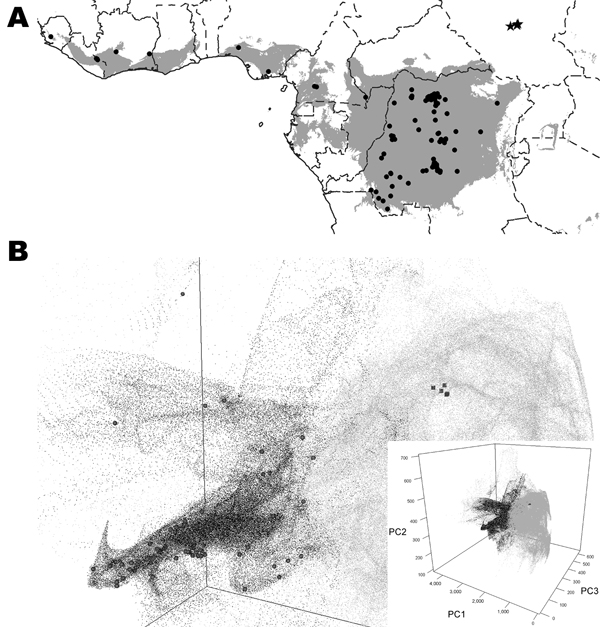Phylogenetic and Ecologic Perspectives of a Monkeypox Outbreak, Southern Sudan, 2005
Yoshinori Nakazawa

, Ginny L. Emerson, Darin S. Carroll, Hui Zhao, Yu Li, Mary G. Reynolds, Kevin L. Karem, Victoria A. Olson, R. Ryan Lash, Whitni B. Davidson, Scott K. Smith, Rebecca S. Levine, Russell L. Regnery, Scott A. Sammons, Michael A. Frace, Elmangory M. Mutasim, Mubarak E. M. Karsani, Mohammed O. Muntasir, Alimagboul A. Babiker, Langova Opoka, Vipul Chowdhary, and Inger K. Damon
Author affiliations: Author affiliations: Centers for Disease Control and Prevention, Atlanta, Georgia, USA (Y. Nakazawa, G. L. Emerson, D.S. Carroll, H. Zhao, Y. Li, M.G. Reynolds, K. L. Karem, V. A. Olson, R. R. Lash, W. B. Davidson, S. K. Smith, R. S. Levine, R. L. Regnery, S. A. Sammons, M.A. Frace, I.K. Damon); National Public Health Laboratory, Khartoum, Sudan (E.M. Mutasim, M.E.M. Karsani); Federal Ministry of Health, Khartoum (M.O. Muntasir, A.A. Babiker); World Health Organization Regional Office for the Eastern Mediterranean, Cairo, Egypt (M.L. Opoka); Médecins Sans Frontières, Khartoum (V. Chowdhary)
Main Article
Figure 2

Figure 2. . A) Predicted geographic distribution in central and western Africa of suitable environments for monkeypox virus transmission on the basis of the Maxent algorithm (www.cs.princeton.edu/~schapire/maxent/). Gray shading represents suitable environmental conditions identified by the algorithm; circles indicate localities of human monkeypox cases used to build the ecological niche models. Stars indicate localities reported during the human monkeypox outbreak in southern Sudan in 2005. B) Scatterplot using the first 3 principal components (PC1, PC2, and PC3) of the environmental variables in sub-Saharan Africa. Gray dots, environmental conditions in the entire area; black dots, suitable conditions identified by the ecological niche models; human monkeypox case localities; green squares, localities where monkeypox was reported in southern Sudan. Inset shows scatterplot scale.
Main Article
Page created: January 22, 2013
Page updated: January 22, 2013
Page reviewed: January 22, 2013
The conclusions, findings, and opinions expressed by authors contributing to this journal do not necessarily reflect the official position of the U.S. Department of Health and Human Services, the Public Health Service, the Centers for Disease Control and Prevention, or the authors' affiliated institutions. Use of trade names is for identification only and does not imply endorsement by any of the groups named above.
